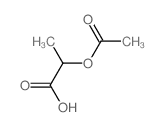| 结构式 | 名称/CAS号 | 全部文献 |
|---|---|---|
 |
3-甲基-2-氧代丁酸钠
CAS:3715-29-5 |
|
 |
2-乙酰氧基丙酸
CAS:535-17-1 |
| 结构式 | 名称/CAS号 | 全部文献 |
|---|---|---|
 |
3-甲基-2-氧代丁酸钠
CAS:3715-29-5 |
|
 |
2-乙酰氧基丙酸
CAS:535-17-1 |